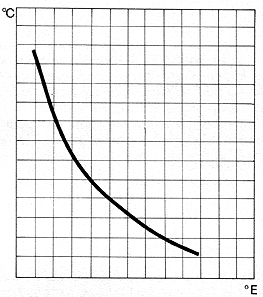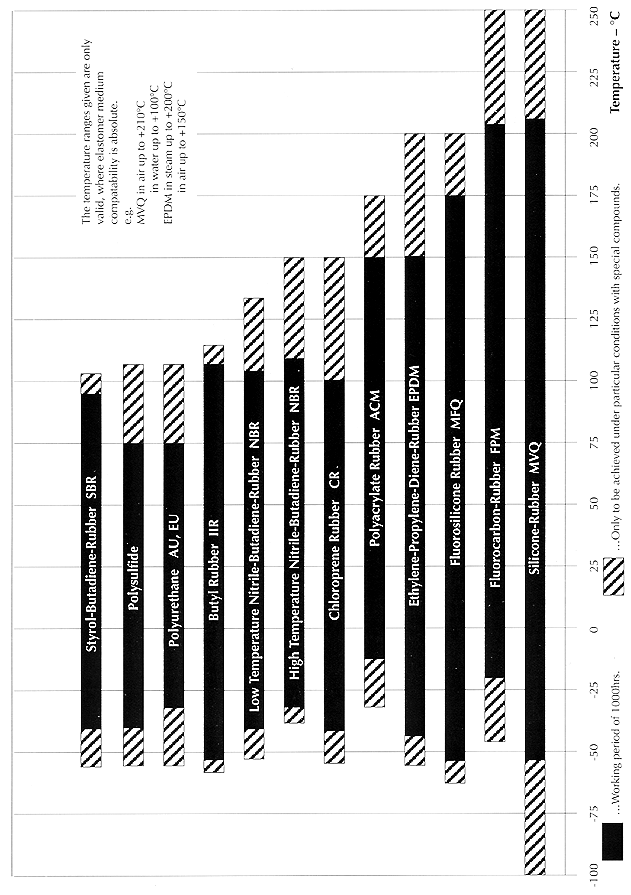Working Conditions
TEMPERATURE
As a consequence of machine evolution, and the fact that manufacturers are keen to utilize high pressures avoiding the degradation of the hydraulic fluid, there is a real necessity to neutralize or reduce the effects caused by thermal stress. These can be disastrous for various components which are dramatically affected by heat changes, especially seals, as they are the most important elements in a dynamic hydraulic system. Any increase in temperature corresponds with a reduction in the fluid viscosity, and thereby resulting in poor lubrication, increase friction values, and decisively influencing the seal performance and life. Working under these stressed conditions the fluid temperature can reach 110 °C to 120 °C in the sealing area, and would give very low values for the fluid viscosity, and therefore a dramatic reduction in the lubricating properties. It is important for the sealing material to have the capacity to avoid thermal damage and excessive wear caused by changes in temperature and consequently changes in friction.
Figure T-1 (The effect of temperature change on fluid viscosity)

Figure T-2 (Temperature range for various elastomer materials)

